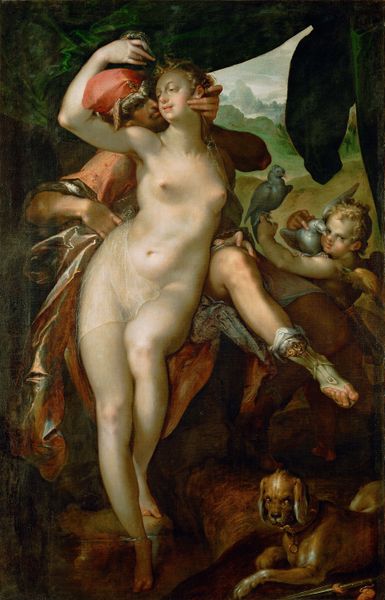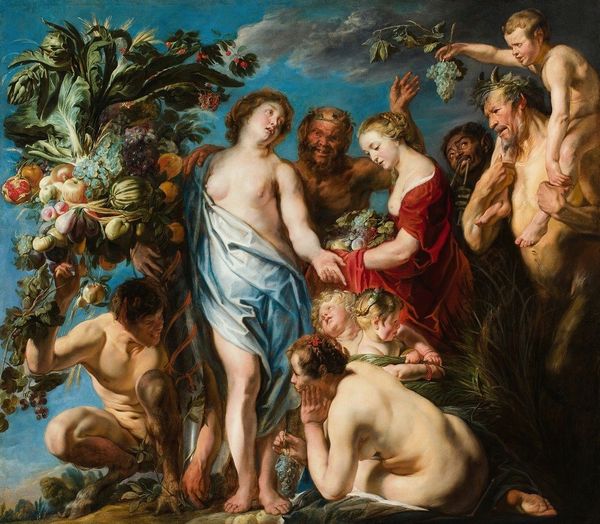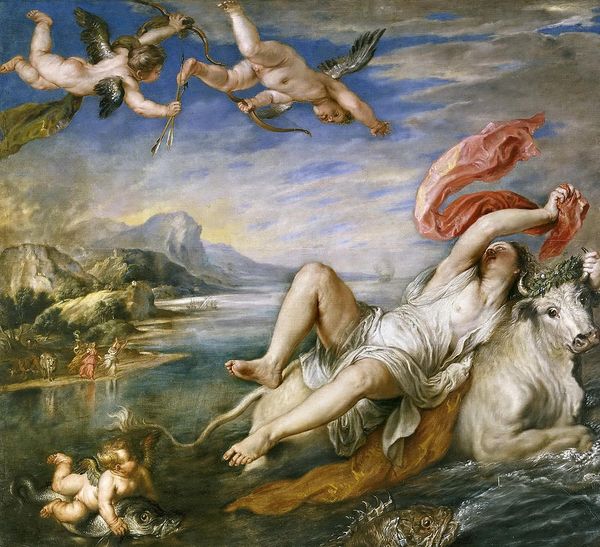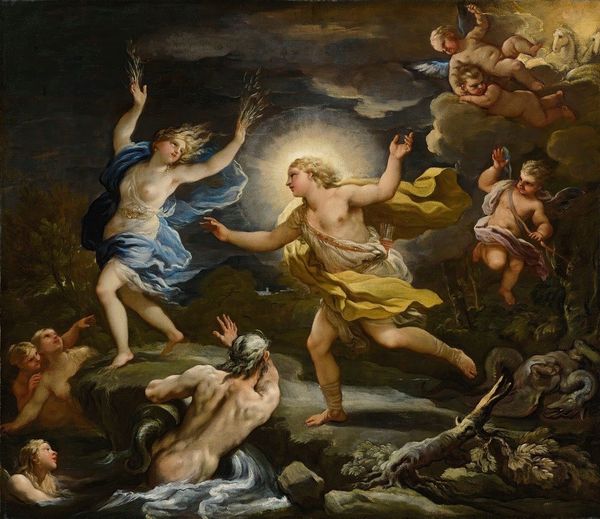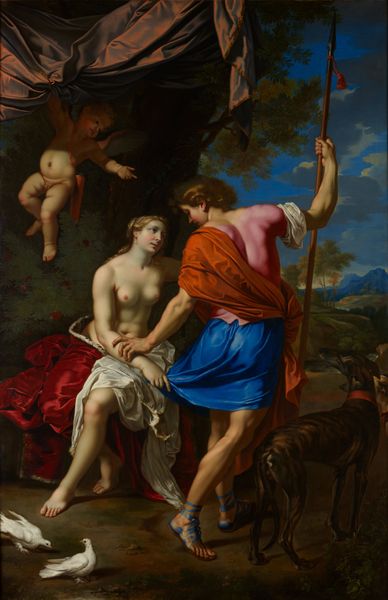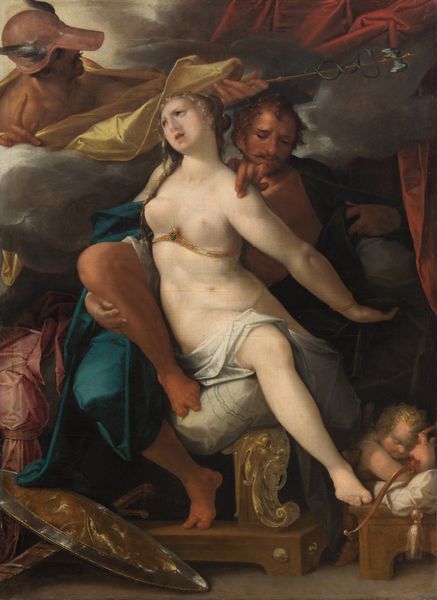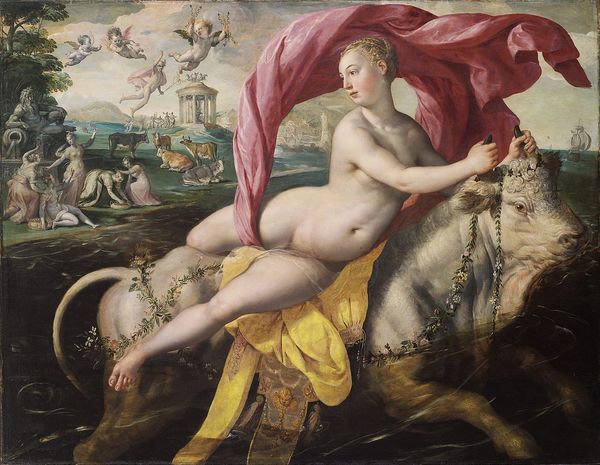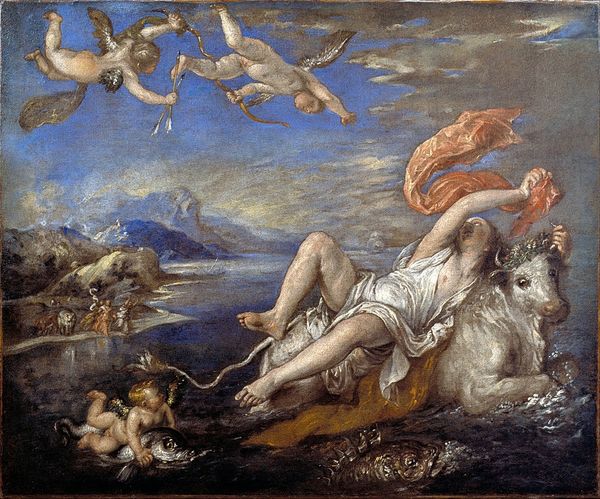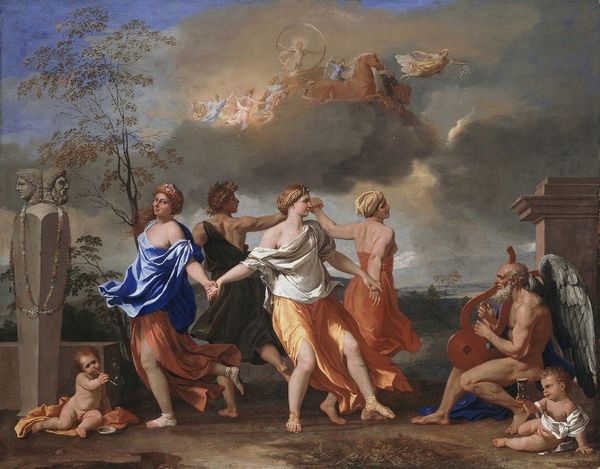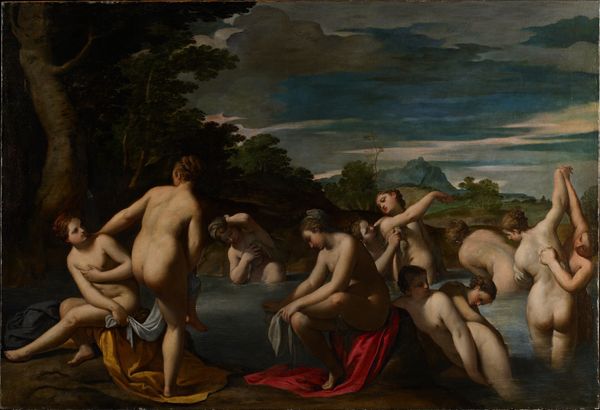
Venus and Mars with Cupid and the Three Graces in a Landscape 1590 - 1595
0:00
0:00
painting, oil-paint, oil-on-canvas
#
allegory
#
painting
#
oil-paint
#
landscape
#
mannerism
#
figuration
#
oil painting
#
history-painting
#
nude
#
oil-on-canvas
Dimensions: 106.5 × 142.8 cm (41 7/8 × 56 1/4 in.)
Copyright: Public Domain
Curator: This is Domenico Tintoretto’s "Venus and Mars with Cupid and the Three Graces in a Landscape," painted between 1590 and 1595. It's currently housed right here at the Art Institute of Chicago. Editor: Wow, it's like stepping into a dream! It's got that hazy, otherworldly glow and that Venus, she's just lounging like she owns the place. The composition seems very intricate. Curator: Absolutely. Tintoretto's work frequently engages with themes of love, war, and beauty, reflecting Mannerist conventions through complex allegorical compositions. The scene encapsulates the reconciliation of Venus, goddess of love, and Mars, god of war, within a harmonious, idealized landscape. Consider, how might contemporary theories view the positioning of these mythological figures and the societal expectations they reflect? Editor: It feels like a backstage drama! Love, war, and beauty are sort of awkwardly hanging out and ignoring each other. Like maybe Cupid messed up the seating arrangement. Though, this piece does sort of reek of privilege when considering what wars looked like for people then...and what love looked like, too! Curator: Indeed. The inclusion of the Three Graces—Aglaea, Euphrosyne, and Thalia—attending to Venus introduces elements of beauty, pleasure, and generosity. Simultaneously, the somber depiction of Mars suggests not only a vanquished warrior but perhaps also the futility of war in the face of love's enduring power. The use of oil-on-canvas allows Tintoretto to produce dynamic textural and light effects to suggest sensuality and depth in an image that does not give us everything up front. Editor: Okay, true, the brushwork is captivating. Like watching fog roll over a dream. Even with its high society problems, there’s something magical about the painterly effects. All that is left over after we acknowledge that is the magic. Curator: Precisely. Reflecting on Tintoretto’s Venus and Mars today prompts vital conversations about power, beauty, conflict, and resolution as negotiated through classical myth, while inviting considerations of whose voices are centered or silenced within those historical and contemporary discourses. Editor: Right, stepping back from that for a minute - beyond all the academic-speak, there's something timelessly fascinating about these themes of beauty, love, and discord. Thanks for making me see that...in a new light, so to speak.
Comments
No comments
Be the first to comment and join the conversation on the ultimate creative platform.

